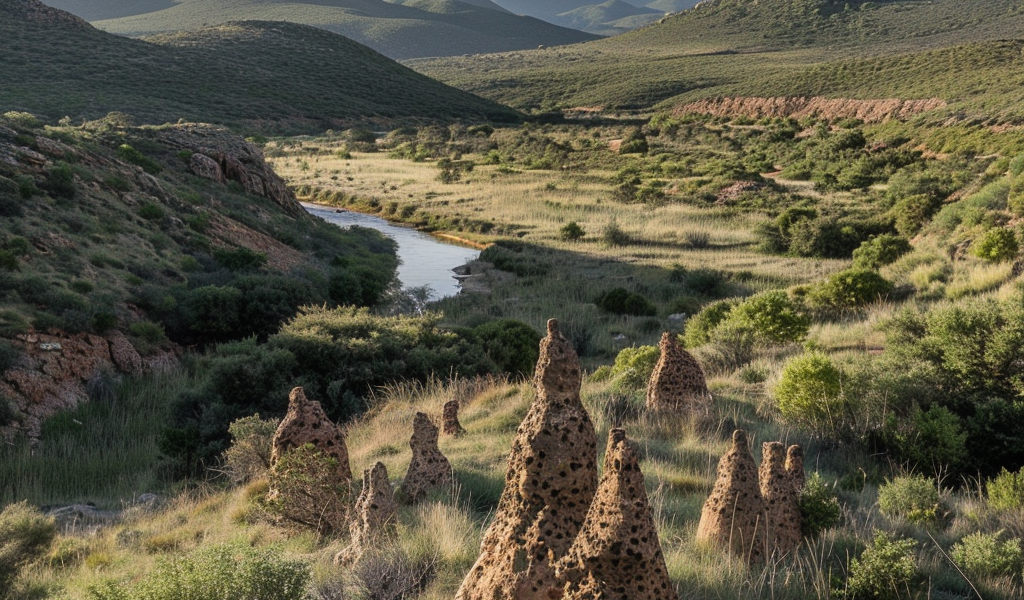Scientists have made a groundbreaking discovery by uncovering the world’s oldest inhabited termite mounds in South Africa. The mounds, located along the Buffels River in Namaqualand, date back an astonishing 34,000 years, challenging our understanding of prehistoric life, climate, and carbon storage.
The research, led by a team from Stellenbosch University’s Departments of Soil Science and Earth Sciences in collaboration with experts from the Institute for Nuclear Research in Hungary, has been published in the journal Science of the Total Environment.
These termite mounds, known as ‘heuweltjies’ in Afrikaans, are home to the southern harvester termite, Microhodotermes viator. Dr. Michele Francis, the lead author of the study, describes these mounds as ancient marvels that predate iconic cave paintings in Europe and even the Last Glacial Maximum.
Radiocarbon dating has revealed that the mounds are still active, with organic carbon dating back 13,000 to 19,000 years and carbonate dating up to 34,000 years. This makes them the oldest active termite mounds with both organic and inorganic carbon to be dated so far. Comparatively, the previous oldest inhabited mounds from a different species in Brazil are only 4000 years old.
These termite mounds offer a unique glimpse into prehistoric climate conditions, indicating a wetter climate in the past that allowed for the dissolution and movement of minerals like calcite and gypsum to groundwater. The mounds have stood the test of time, providing a living archive of environmental conditions that shaped the world thousands of years ago.





